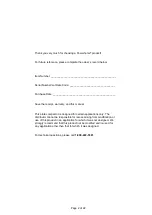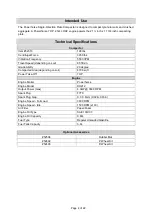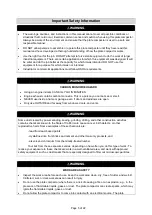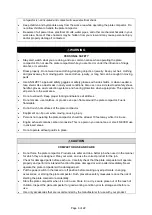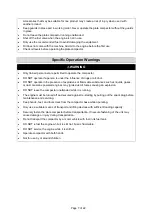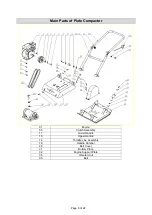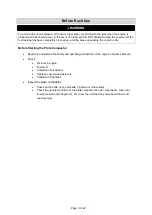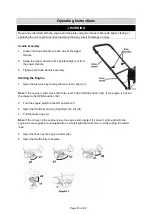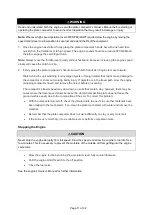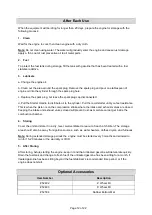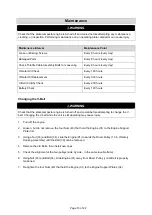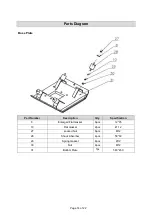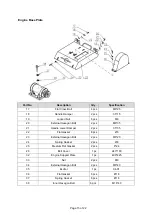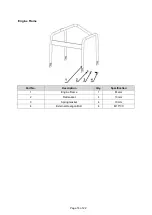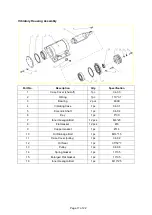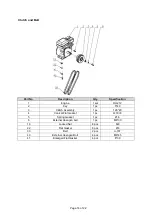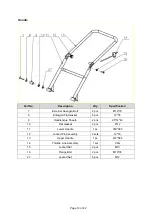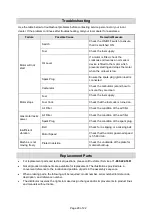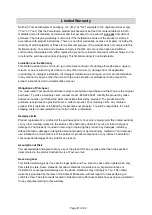
Page 12 of 22
After Each Use
When the equipment will be idling for longer than
20 days, prepare the engine for storage with the
following process:
1. Clean
Wait for the engine to cool, then clean engine with a dry cloth.
Note:
Do not clean using water. The water will gradually enter the engine and cause rust damage.
Apply a thin coat of rust preventive oil to all metal parts.
2. Fuel
To protect the fuel tank during storage, fill the tank with gasoline that has been treated with a fuel
stabilizer additive.
3. Lubricate
a. Change the engine oil.
b. Clean out the area around the spark plug. Remove the spark plug and pour one tablespoon of
engine oil into the cylinder through the spark plug hole.
c. Replace the spark plug, but leave the spark plug cap disconnected.
d. Pull the Starter Handle to distribute oil to the cylinder. Pull the recoil starter until you feel resistance.
This is when the piston is on the compression stroke where the intake and exhaust valves are closed.
Keeping the intake and exhaust valves closed will prevent rust, as moisture cannot get inside the
combustion chamber
.
4. Storing
Cover the unit and store it in a dry, level, well-ventilated
area out of reach of children. The storage
area should
also be away from ignition sources, such as
water heaters, clothes dryers, and furnaces.
Note:
During extended storage periods the
engine must be started every 3 months and allowed to
run for 15-20 minutes or the warranty is VOID.
5. After Storing
After storing, before starting the engine, keep in mind that untreated gasoline will deteriorate quickly.
Drain the fuel tank and change to fresh fuel if the untreated gasoline has been sitting for a month, if
treated gasoline has been sitting beyond
the fuel stabilizer’s recommended time period, or if the
engine does not start.
Optional Accessories
Item Number
Description
#52492
4” Wheel Kit
#52493
6” Wheel Kit
#52504
Rubber Bottom Mat


